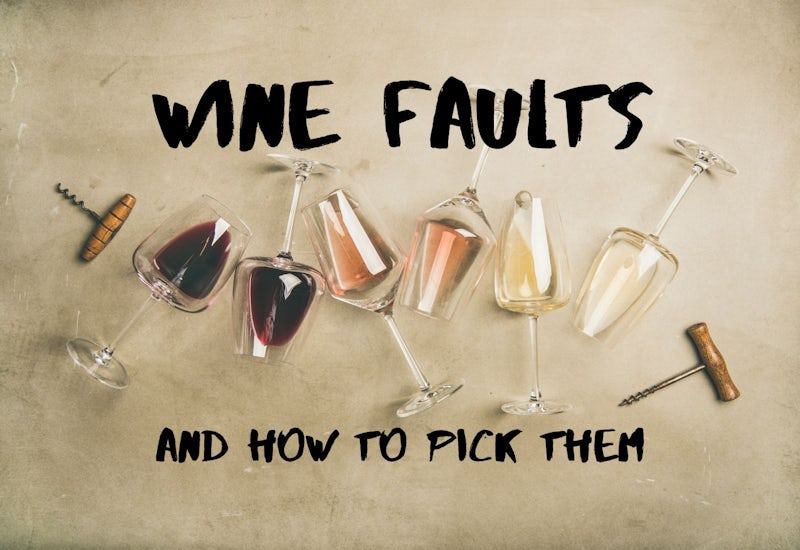13.03.2023
Wine faults and how to pick them.

Wine faults are defects or flaws in a bottle of wine that significantly affect the flavour, aroma and appearance of a wine making it unpleasant, muted, unpalatable or undrinkable.
Faults can occur during the winemaking process, or they can occur during the storage of a wine, but regardless of how they came to be, they still suck!
So how do we determine if a wine has faults? First, we have to look, smell and taste and see if the wine is fruity and fresh, or something else. Is there any discolouration or cloudiness, can you smell rotten, mouldy or funky aromas and does it taste muted, bitter, sour or astringent? If so, then you have detected wine faults.

So we've found some faults, but which fault is it? Here are the most common wine faults that will explain what you're seeing, smelling and tasting in your wine.
-
Cork Taint (TCA): If you smell musty, slightly mouldy and damp cardboard-like aromas sitting on top of your wine, then you're unfortunately experiencing a fault called Cork Taint. Cork taint mutes aroma and flavour significantly and is considered a serious wine fault. No one likes cork taint!
-
Oxidation (Premox): When a wine is prematurely exposed to too much air, it can become oxidised and results in a wine that has lost freshness, fruitiness and colour. White wines will generally smell flat, bruised, nutty, a touch vinegary and lacks vibrancy and freshness, while red wines will generally smell flat, cooked, raisinated and vinegary with a lack of fresh fruit, florals and vibrancy.
-
Volatile Acidity (VA): Volatile acidity shows with notes of nail polish remover, vinegar and sour flavours and is a result of excessive amounts of acetic acid. It can be quite pungent and overwhelming in high levels, masking the fruit and floral notes of a wine, but in small proportions it can actually elevate a wine and give it lift. Some people have higher tolerances to VA than others.
-
Reduction: When a wine is not exposed to enough air/oxygen during the winemaking process, reduction can occur. Reduction smells of rotten eggs, rubber, burnt matchsticks, or sewage and can mask fruit and floral notes. Interestingly, small amounts of reduction in wines like Chardonnay is often desirable and gives a complex aroma profile to the wine. Most wines that are reductive upon opening will blow off as it is exposed to oxgen. Decanting helps this along.
-
Brettanomyces (Brett): The smell of bandaid, barnyard, medicinals or manure in your wine indicates the presence of Brettanomyces. Brett is a yeast that can grow during winemaking and storage, caused bybpoor hygeine in the winery, barrels or bottles. Though this fault sounds terrible, some wine drinkers really enjoy the presence of Brett as long as it doesn't mask the fruit and florals.
-
Cooked wine: A fault that occurs when wine is exposed to high temperatures for a prolonged period of time and effects the wine's flavour and aroma profile. The heat can cause the wine to oxidize and lose its fruity, fresh notes, instead taking on a more cooked or stewed character. The wine may also develop caramelized or burnt flavours.
So what happens if a wine is faulty? Good news is that wine faults are not dangerous in any way, so you can still drink the wine, but it may not be very pleasurable. Alternatively, you may be entitled to a refund or a replacement bottle, depending on the type of fault, where the wine was bought and how the wine has been stored since purchase.

